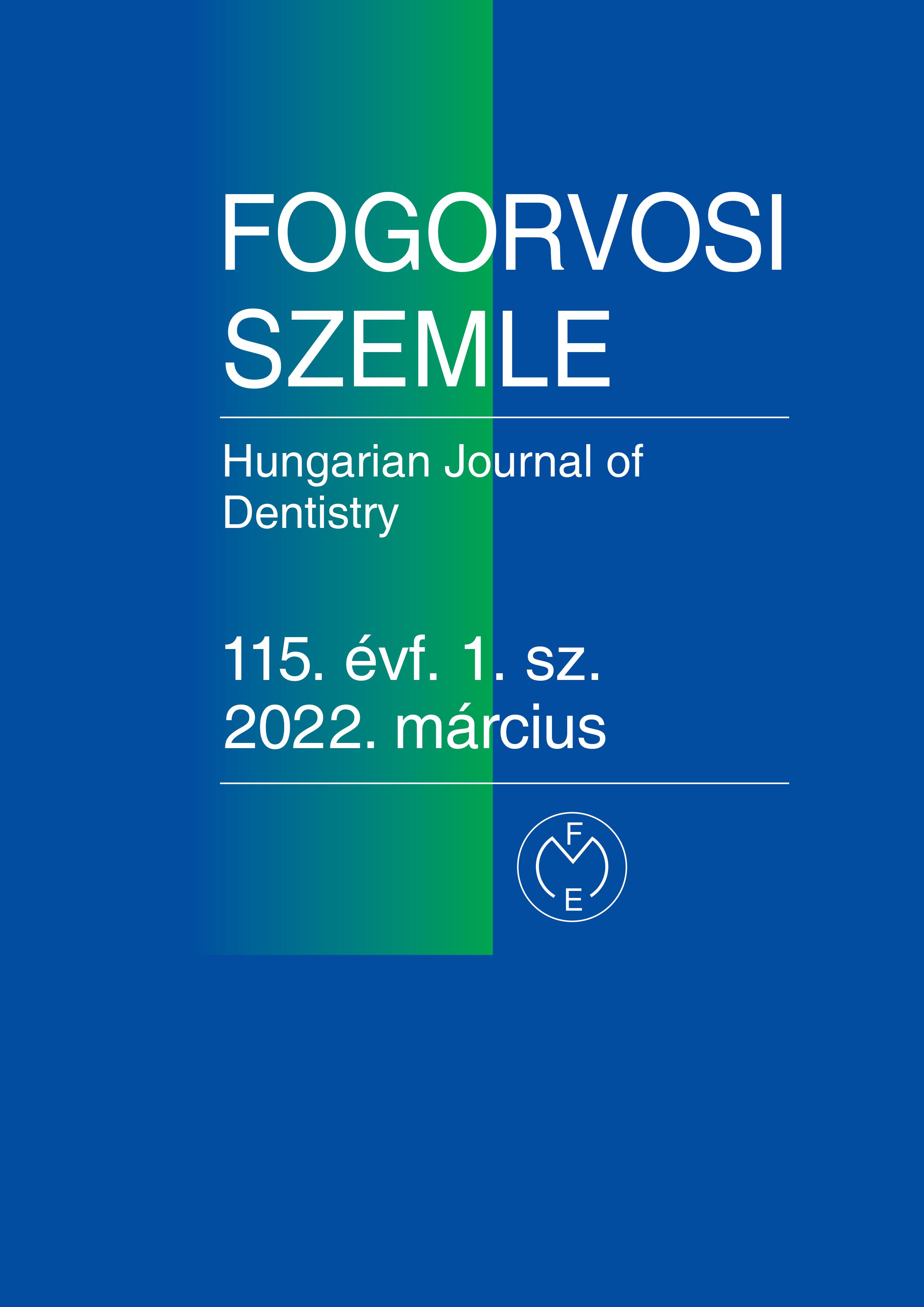Additions to the history of Hungarian dental care and education from the 18th century to the 20th century
Abstract
After the church ban, the surgical and dental care provided by the monastic medicine of the early Middle Ages was replaced
by the service of the barbers, who traditionally worked as a barber-surgeons. After organising into the guilds
formed in commercial hubs, the barbers managed patient care on the outskirts of villages and cities. In addition, marketplaces
were used to remove teeth by the wandering barbers . Among the rural population, other professionals (herbwomen,
oil sellers) were participating in pain relief and inflammation
reduction. From the 13th century, the teaching of
surgery was taken over by the secular schools (Paris), thus establishing a branch of scholastic medicine. In Hungary,
the university training for the surgeons, and thereafter, the dentists started at the University of Trnava, (Nagyszombat),
and later, moved
to Buda and Pest. Subsequently, a royal decree banned surgical and dental activities of barbers. For a
long time, in Hungary, until the start of the university education in dentistry and training for dental doctors in the middle of
the 19th century, it were wanderer surgeons and dentists who provided patient care to the population of the countryside.
References
Blázy Á: Adatok a Taxa Pharmaceutica Posoniensisről. Gyógyszerészet 1965; 9 (12), 474–477.
Forrai J: Az európai fogászat fejlődése a vándor borbélyságtól a fogász mesterségig, különös tekintettel a 18. századra. Doktori disszertáció. Semmelweis Egyetem Közegészségügyi Intézet, Budapest, 2009.
Forrai J: A magyar fogtudomány kezdete. Neumann Kft., Budapest, 2004. https://mek.oszk.hu/05200/05209
Huszár Gy: Mozaikok a magyar fogászat múltjából. Fogorv Szle 1948; 41, 239–245.
Huszár Gy: A magyar fogászat története. Országos Orvostörténeti Könyvtár, Budapest, 1965.
Kaán M: A népi foggyógyítás története, A fogfájás gyógyítása. Magyar Fogorvos 2009; 102, 46–49.
Kaán M: Foggyógyítás magyar hagyományai a források és a szakirodalom tükrében. Doktori disszertáció. ELTE Bölcsésztudományi Kar 2012; 80–96, 104–137.
Kapronczai K: Vajna Vilmos. Orvosi Hetilap 115, 3003–3004, 1974
Kapronczay K: A kolostori medicina. Lege Artis Medicinae 1992; vol. 2, No. 12, 1196–1197.
Kiss A: Gyógyítás a középkori európai szerzetesrendekben. Orvosi Hetilap 2008; 149, (48), 2293–2297. https://doi.org/10.1556/oh.2008.ho2210
Kóbor A, Forrai J: A fogorvosképzés magyarországi fejlődésének története. Történelmi előzmények a középkortól a II. világháború befejezéséig. In: 50 éves a Semmelweis Egyetem Fogorvostudományi Kara, 15–30, SE FOK Budapest, 2005.
Kóbor A: A világ első nyomtatásban megjelent fogászati könyve. Fogorv Szle 2010; 103, 125–129.
Kóbor A: Fitoterápia a XI. századi fogászatban. Magyar Fogorvos 2010; 19, 97–101.
Kóbor A: Borbélyok, sebészek, fogművesek, fogászok. A fogászat fejlődése Magyarországon 1556–1914. Magyar Fogorvos 2018; 26, 40–45.
Magyary-Kossa Gy: Magyar orvosi emlékek I–IV. Magyar Orvosi Könyvkiadó Társulat Budapest, 1929–1931.
Péter M: Neves székelyföldi orvosok élete és tevékenysége. Kaleidoscope 2013; vol. 4, No. 3.
Puskely M: Adalékok a szerzetesi orvoslás történetéből. http://acta.bibl.u-szeged.hu/2978/1/historica_124_003-022.pdf
Salamon H: A stomatológia tanításának története Magyarországon. Árpád Könyvkiadó [S. l.], 1906; 231–247.
Salamon H: A magyar stomatológia (fogászat) története. Magyar Fogorvosok Országos Egyesülete Budapest, 1942.
Schultheisz E: A kolostori medicina és a természettudományok alakulása a köözépkorban. In: Fejezetek az orvosi művelődés történetéből. Magyar Tudománytörténeti Intézet Piliscsaba, 2006; 21–32.
Simon K: Sebészet és sebészek Magyarországon (1686–1848). Doktori disszertáció. ELTE Bölcsészettudományi Kar [Budapest], 2011.
Copyright (c) 2022 Authors

This work is licensed under a Creative Commons Attribution 4.0 International License.


.png)




1.png)



